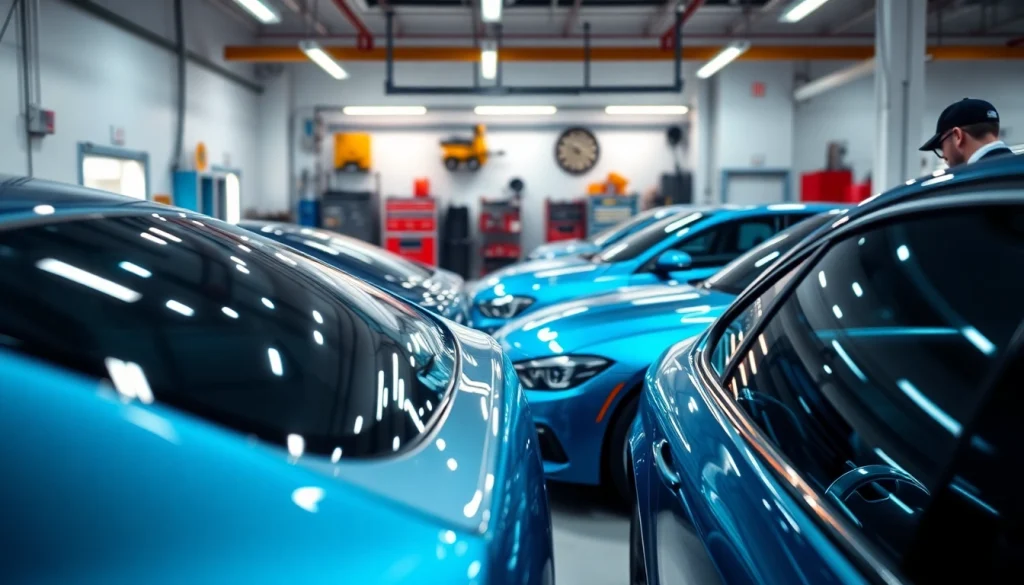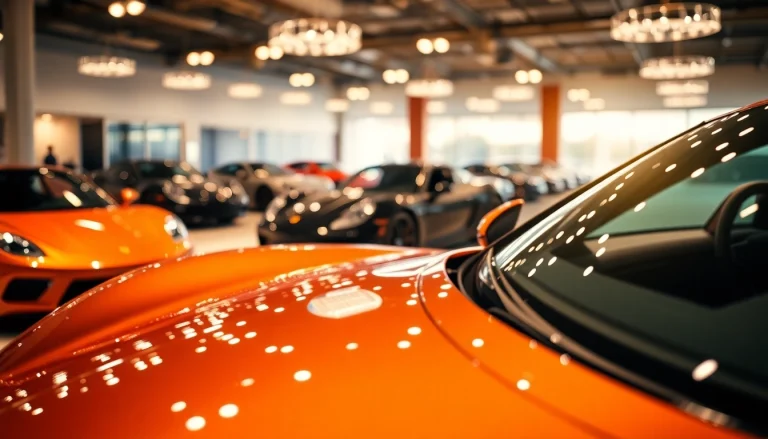
Understanding Car Tinting
What is Car Tint?
Car tint refers to the application of a thin film to the windows of vehicles. Made from various materials, including polyester, this film is designed to limit the amount of light entering the car, enhance aesthetics, and provide privacy. Different levels of tint darkness, varying heat rejection rates, and UV protection features make these films adaptable to a range of consumer needs. By applying window film, car owners can achieve not only a sleeker appearance but also added benefits in comfort and vehicle protection.
Benefits of Car Window Tinting
The advantages of installing car tint extend beyond just looks. Here are some key benefits:
- UV Ray Protection: Window tint can block up to 99% of harmful UV rays, protecting passengers and the interior from sun damage.
- Heat Reduction: Quality films can reduce heat inside the car by up to 60%, providing a more comfortable driving experience.
- Glare Reduction: Tinted windows cut glare from bright sunlight, improving visibility and reducing eye strain.
- Enhanced Privacy: Tints can help protect your valuables and offer greater personal privacy.
- Safety and Security: Window films can hold shattered glass together in case of an accident, adding an extra layer of safety.
Choosing the Right Type of Tint
When selecting a window tint, consider factors such as the level of darkness, material quality, and intended benefits. Different types include:
- Dyed Window Film: Provides a basic level of privacy and solar protection; popular for its affordability.
- Metalized Window Film: Reflective and durable, this type enhances heat and UV rejection, but may interfere with electronic devices.
- Ceramic Window Film: Offers high-performance properties, exceptional heat rejection, and does not interfere with signal transmission.
- Carbon Window Film: Provides a stylish matte finish and effective UV protection without fading over time.
The Process of Car Tinting
Initial Consultation and Assessment
The car tinting process begins with an initial consultation where the service provider assesses your vehicle and discusses your needs. This step is vital in understanding your preferences, budget, and legal restrictions regarding window tinting in your area. During this phase, knowledgeable technicians can offer insights on the best tint options available based on your requirements.
Installation Techniques and Materials
Depending on the tint chosen and the vehicle type, the installation process will vary. Here are key components of the installation:
- Surface Preparation: Technicians will clean the windows thoroughly to ensure no dust or debris affects the tint adhesion.
- Precision Cutting: The tint film is meticulously cut to fit each window accurately, ensuring a smooth and seamless installation.
- Application: Skilled technicians apply the film to the inside of windows, using specialized tools to eliminate air bubbles and achieve a flawless finish.
- Curing Time: After application, a specific drying time is required to ensure proper adhesion, which can vary by the product used.
Post-Installation Care
After installation, appropriate care is essential to maintain the tint’s performance. Common care tips include:
- Avoid rolling down windows for at least a few days post-application to allow the film to cure.
- Use a soft cloth to clean tinted windows; avoid abrasive cleaners that may damage the film.
- Schedule regular inspections to check for any lifting or bubbling, ensuring that any issues are promptly addressed.
Finding Car Tint Near Me: Tips for Choosing a Service
Researching Local Tinting Services
Searching for car tint near me can be overwhelming with numerous options available. Start by comparing local tinting services in your area to find those with good reputations. Look for companies that have been established for several years, which often indicates reliability and expertise. Consider requesting quotes and exploring their portfolios to see examples of their work.
Reading Reviews and Testimonials
Customer reviews and testimonials can provide valuable insights into the quality of service offered by tinting companies. Utilize platforms like Google Reviews, Yelp, or Facebook to read experiences from previous clients. Look for feedback on factors such as customer service, quality of installation, and post-service support, which could heavily influence your decision.
Understanding Pricing Structures
Understanding the pricing structure can help you make an informed choice. While it may be tempting to choose the cheapest option, consider the value offered by more reputable services. Comprehensive estimates should include materials, labor, guarantees, and warranty information. Be aware of potential hidden costs related to removal of old tint, customization options, and additional services.
Legal Considerations for Car Tinting
State Regulations and Compliance
Before getting your windows tinted, it’s crucial to familiarize yourself with local laws and regulations surrounding window tinting. Each state has its own guidelines concerning the allowable levels of tint darkness on various windows. Compliance not only helps avoid potential penalties but also ensures safety on the roads.
Understanding Tint Darkness Limits
Most states set limits on how dark tint can be on the front and rear windows. Understanding these can prevent fines or the need for costly removal. Front windshields usually allow only a certain percentage of light transmittance, while rear windows might offer more flexibility. Checking state laws through official government websites provides clarity on permissible levels.
Potential Fines and Penalties
Driving with illegal window tint can result in fines and even penalties such as the requirement to remove the tint or re-tint at your own expense. Some states employ roadside inspections, and law enforcement may issue citations if they suspect violations. Taking the time to educate yourself on these laws can save many headaches in the long run.
Maximizing the Benefits of Car Tint
Keeping Your Tint Fresh and Effective
Maintaining your window tint is crucial to ensuring its longevity and effectiveness. Regular cleaning and avoidance of harsh chemicals will keep the film looking new. Additionally, proactive checks for peeling or bubbling help address issues before they become significant problems.
Comparing Tint Options for Long-Term Value
When evaluating your tint options, consider the long-term value of different films. While cheaper options may save you initially, films that offer better heat and UV protection may save money on energy bills and vehicle preservation in the long run. Investing in higher-quality window films can yield better performance and durability.
Integrating Car Tint with Other Vehicle Enhancements
Automotive window tint should be considered part of an overall vehicle enhancement plan. When upgrading or modifying your vehicle, consider how window tint complements other features such as paint protection film, ceramic coatings, or even car alarms for comprehensive vehicle integrity. Coordination between these enhancements can maximize both aesthetics and protection.






